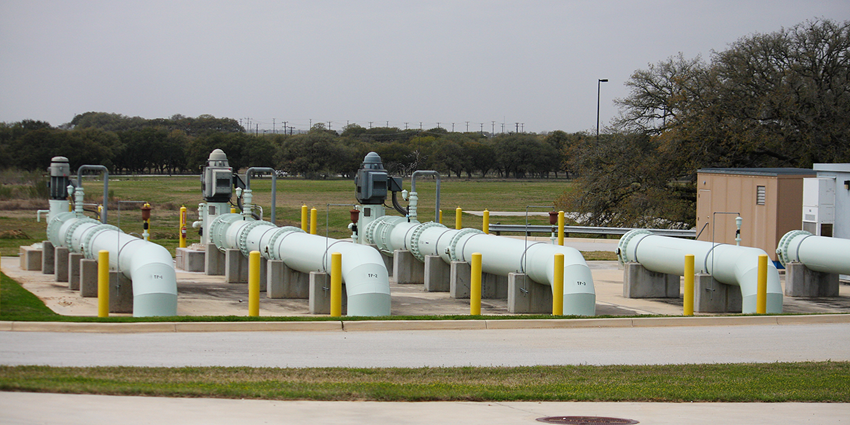While not widely used in Texas, experts with The Texas A&M University System are promoting aquifer storage and recovery (ASR) through a new initiative to increase expertise in this subject area as well as conduct more research on potential aquifers and increase the public’s knowledge.
The project, Aquifer Storage and Recovery for Texas – A Research and Extension Initiative, was recently funded by money provided to Texas A&M Engineering Experiment Station (TEES) by the Texas Legislature.
“The broad goal of the project is to develop a ‘working group’ of Texas A&M University System research and extension personnel capable of addressing the future ASR technical needs of Texas,” said Dr. Gretchen Miller, assistant professor of water resources engineering in the Zachry Department of Civil Engineering and the project’s principal investigator.
Other investigators on the project are Dr. Calvin Finch, director of the Water Conservation and Technology Center (WCTC), administered by the Texas Water Resources Institute and Texas Center for Applied Technology (TCAT); Dr. Dorina Murgulet, assistant professor of hydrogeology at Texas A&M University–Corpus Christi; Mike Martin, interim director for the environmental sustainability division at TCAT; and Dr. Brenda Rushing, assistant professor of biology at Texas A&M University–San Antonio.
The working group is an interdisciplinary team including experts in not only ASR but also hydrogeology, groundwater monitoring, conservation education, Texas water planning, environmental engineering, wastewater management, energy conservation and human health barriers to integrating ASR into indirect potable reuse systems.
“The project will develop new groundwater modeling tools to help predict the potential for ASR to affect water quality in an aquifer, assess using ASR in several major Texas aquifers, and conduct outreach through delivery of short-courses and presentations on ASR around the state, as well as development and distribution of educational materials on ASR,” Miller said.
“By the end of the project, we expect to have a good evaluation of the prospects for ASR use in Texas,” she said.
“There are a lot of different issues to address,” Finch said. “What aquifer characteristics work best? What are the economics of ASR? What policies and legislation restrict use of ASR and what is needed to address them? What are potential contamination issues? What is the recovery potential of injected water and what will its condition be when withdrawn?
“There’s just a huge area that we need to be working in if we’re going to take advantage of the full potential of aquifer storage and recovery.”
Miller said the hope is that this initiative will ultimately set the stage for the creation of an ASR center as part of the WCTC. “We also anticipate that it will generate greater interest and investment in ASR,” she said.
“I hope we can continue our progress toward a day when we have that knowledge and are recognized as contributing the way we should be to getting the ASR technology utilized in the state,” Finch said. “There are a lot of opportunities out there and it’s an important technology. To me, it makes so much more sense than a surface reservoir in terms of cost, environmental pressures, speed and efficiency of it for storage.”


